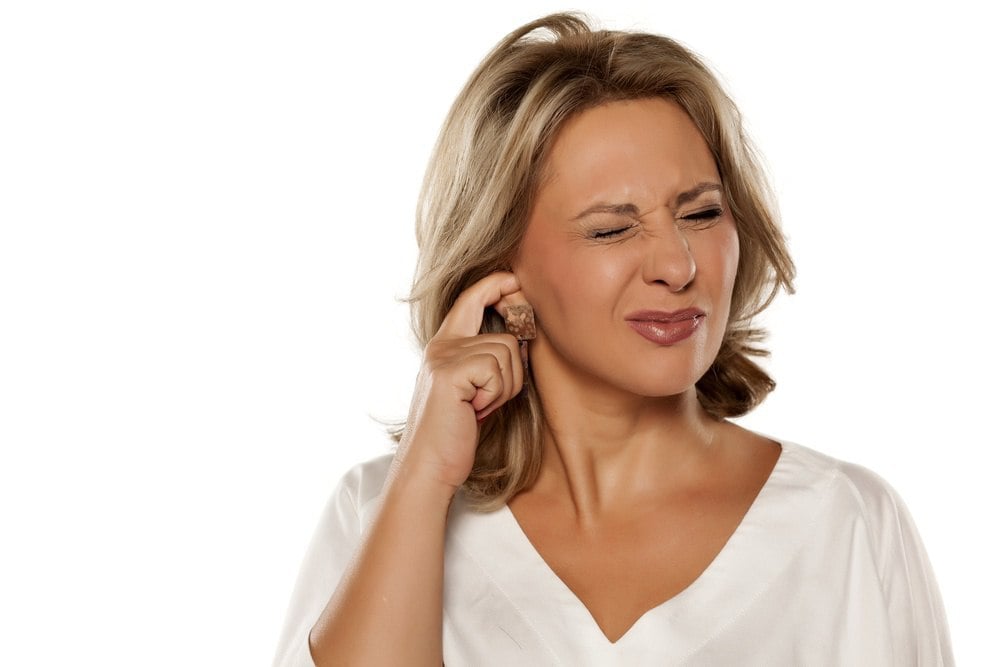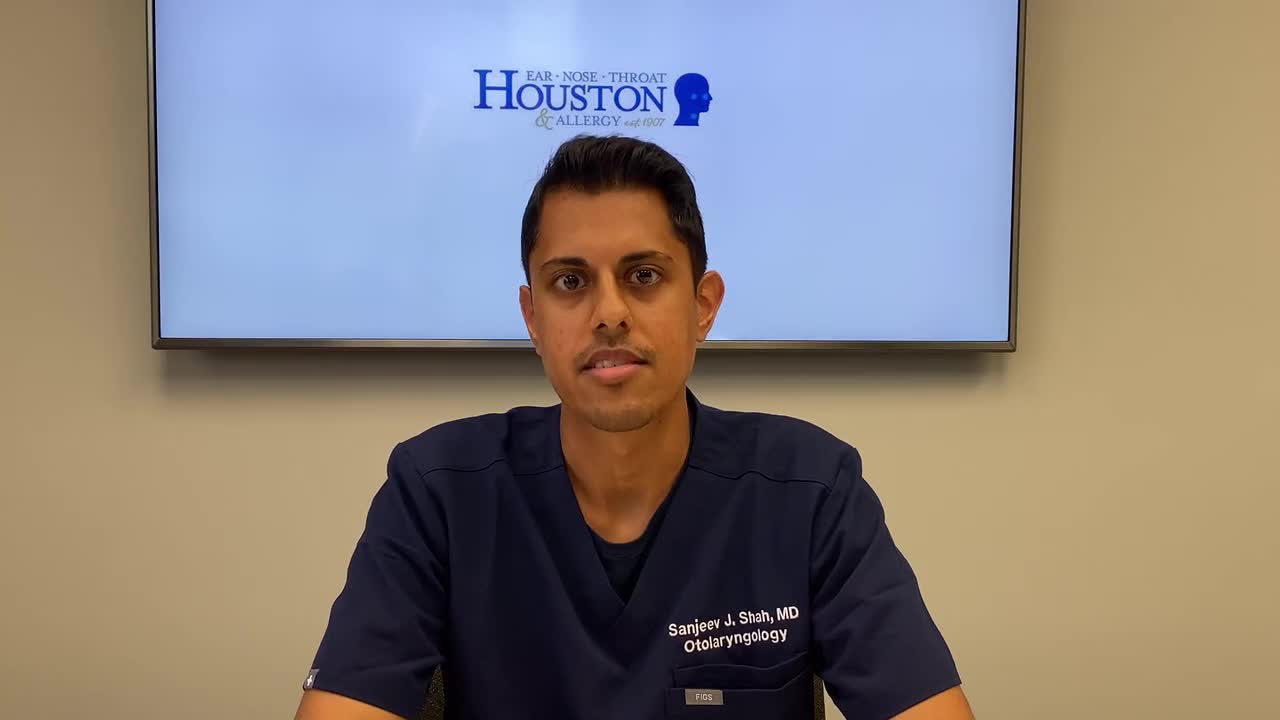Ear Wax Removal: Reasons, Risks, and When to See a Doctor
October 10th, 2018 | 5 min. read


Earwax, also known as cerumen, plays an important role in your body. It helps eliminate dirt, debris, hair and dead skin cells from your ear canal. Earwax keeps your ear canal from becoming itchy and uncomfortable and it lowers your risk of infection. It also helps decrease the irritation of water when it gets into your ear canal.
While earwax does serve some useful purposes, having too much of it can result in buildup and ear canal blockage. Your body can overproduce earwax leading to this blockage, but also, you can cause the blockage as well by cleaning your ears out with a cotton swab or other item that pushes the earwax further into your ear canal.
Watch the video by Sanjeev Shah, MD in this post to learn more.
Get your earwax removed today at any of our 10 locations near you in Houston, texas
Schedule an appointment at any one of our 10 convenient locations in Houston, TX today.
Some Individuals choose to treat earwax blockage, which also goes by the medical term cerumen impaction, at home with simple household products like hydrogen peroxide. Even though earwax removal can be a simple procedure, if done wrong can have serious consequences to one’s hearing. Therefore, medical experts recommended having a doctor perform ear wax removal procedures.
Ear wax blockage can cause numerous symptoms, including:
-
Pain
-
Itching
-
Tinnitus
-
Dizziness
-
A feeling of fullness
-
A reflex cough
-
Hearing loss
Each year, there are eight million ear irrigations performed in medical offices in the U.S.
Reasons to Remove Ear Wax
Individuals whose body produces a lot of earwax have a higher chance of having an earwax blockage and impaction. Some individuals can produce excess earwax by swimming. Earplugs and hearing aids keep wax from naturally falling out of your ear, leading to build up inside your ear.
If excess earwax accumulates and becomes hard, it may form a plug that can block your ear. A blocked ear can affect your hearing and be painful.
With an earwax blockage, you may experience symptoms such as:
-
An ear infection
-
An earache
-
Itchiness
-
A cough (the blockage pressure stimulates an ear nerve)
-
Vertigo (a feeling of being unbalanced that could lead to nausea and dizziness)
-
A feeling of fullness in your ear
Excessive earwax buildup is the cause of a lot of hearing-aid faults.
See your Houston ENT Doctor today for your ear wax removal
Click the image below to request an appointment with one of our Houston ENT physicians for an ear wax consultation today!
Risks of Removing Ear Wax at Home
Using certain items in an attempt to relieve itching or remove earwax can cause the buildup to become worse. Some of these items include:
-
Q-tips or cotton swabs
-
Napkin corners
-
Keys
-
Bobby pins
Many people believe cotton swabs, paperclip or even hairpins can clean their ears. This is not true. When you stick a foreign object in your ear, you risk pushing the earwax further into your ear or damaging your eardrum and ear canal. These outcomes can lead to serious complications. Consult with your Houston doctor if you suspect any of these things happened to your ear. They may refer you to a Houston ENT.
Symptoms and signs could indicate another condition. You might think you can remove earwax by yourself at home, but it's hard to know if you have excessive earwax without a doctor looking into your ears. Just because you're experiencing symptoms and signs like decreased hearing or an earache, doesn't necessarily mean there's earwax accumulation. You could possibly have another medical problem that involves your ears requiring medical attention.
Earwax removal is most safely done by an ear specialist or doctor. Excessive earwax can actually damage your delicate eardrum or ear canal easily. Therefore, don't attempt to remove the earwax yourself by placing objects in your ears, particularly if you:
-
Have a perforation (hole) in your eardrum
-
Have had ear surgery
-
Are having ear drainage or pain
Kids typically have their ears examined during their annual medical examination. If needed, the primary care physician will remove any excess earwax during the office visit from your child's ear.
Individuals should only clean or remove earwax from their ears under the guidance of a doctor.
It bears repeating: Earwax removal can be a simple procedure, but if done wrong can have serious consequences to one’s hearing. This is why you shouldn't attempt it at home using foreign objects and you should seek professional medical attention from an experienced doctor or Houston ENT.
When to See a Doctor for Ear Wax Removal
While you can treat an earwax blockage at home, as mentioned, your eardrum and ear canal are delicate, therefore, it will be safer to allow your Houston ENT doctor to perform the earwax removal.
You should also see your doctor if you're experiencing any drainage or bleeding from your ear or are dealing with significant pain since another problem could be causing these symptoms.
Make an appointment with a pediatrician if you have concerns that your child has an impacted cerumen. They'll examine your child's ears and suggest a treatment option.
If ear wax removal at home is not satisfactory or if you have an accumulation of wax in your ear so much it's causing a blockage in your ear canal and/or is affecting your hearing, seek medical attention. Your doctor can prescribe you specific ear drops that will help soften the wax. Or, they may simply vacuum or wash it out. In some cases, an ENT or otolaryngologist might need to use a microscopic visualization procedure to remove the wax.
The doctor can remove a blockage using:
-
Irrigation
-
Suction
-
A curette (small surgical instrument)
-
A rubber ball syringe
If you have a possible perforation, puncture or hole in your eardrum, you should see a doctor before you attempt any OTC remedies. You can cause infection if you put eardrops or other products in your ear when there's an eardrum perforation. Even washing water through a perforation can cause an infection.
The ENT doctor may remove your excess wax using any of the techniques above such as inspecting your ear while using suction or using a curved, small instrument called a curette. They might also use a rubber-bulb syringe filled with warm water or water pick to flush out the wax.
If you have a recurring earwax buildup problem, your doctor might suggest a wax-removal medicine like carbamide peroxide. Since these drops can aggravate delicate eardrum and ear canal skin, you need to use them only as your doctor directs you too.
Alternative Medicine
Another method some individuals use is ear candling. This is a method that involves placing a hollow, lighted, cone-shaped candle into your ear in the attempt to remove earwax. It's said the flame's heat will create a vacuum seal and the wax from the ear will adhere to the candle.
But, ear candling isn't recommended for treating earwax blockage. It usually doesn't work and it could result in an injury like:
-
Ear canal obstructions
-
Burns
-
Perforations
Call Houston ENT to Set Up your Ear Wax Removal Procedure
To recap, avoid sticking anything in your ear to prevent earwax blockage. Earwax might seem unpleasant, but it’s not necessary to clean it. If your body does produce excessive earwax, you can buy OTC ear drops to safely handle the problem.
Regular irrigation of the ear can also help prevent earwax buildups. However, it's usually best to use this method to treat an actual blockage. Talk to your ear wax removal doctor before you try any alternative remedy to remove earwax and to see if you should come in for an ear exam to detect ear wax blockage that could lead to further problems.
Request an appointment for ear wax removal at Houston ENT & Allergy Services by calling 281-623-1312 or by completing our online form.
She completed her undergraduate education at the University of Notre Dame in South Bend, Indiana. She moved to North Carolina to attend the Wake Forest University School of Medicine for her medical degree. She then went on to complete her residency at the University of Texas Health Science Center- Houston in 2001.
Topics:


